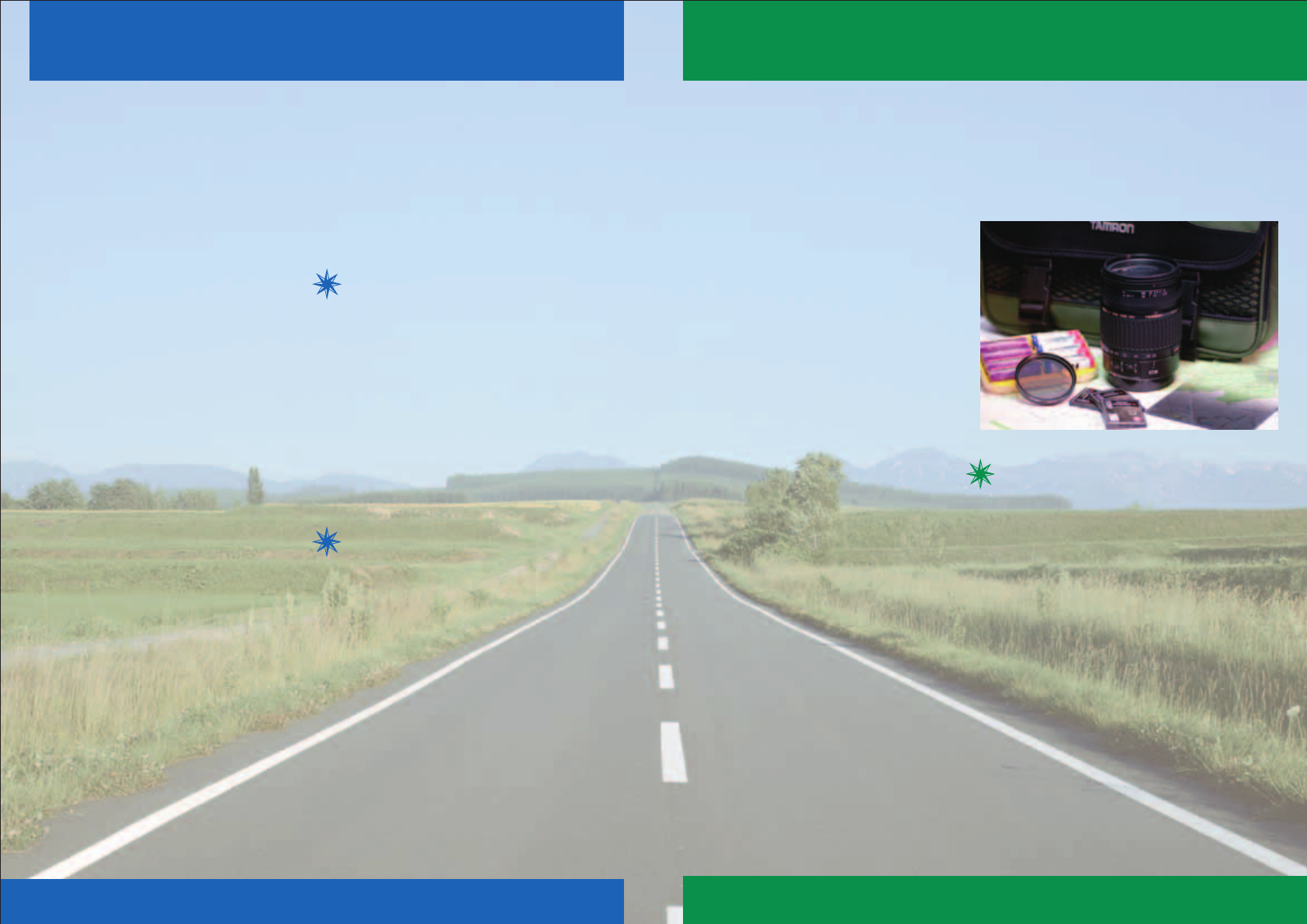
On the Road Again: Preparing and Packing
3
2
The All-In-One Tamron
28-300mm VC Lens
The All-In-One Tamron 28-300mm VC Lens
Planning your next short road trip? You’ll want to take a lot of photos to document your travels,
whether you’re heading to the seashore, braving the desert heat, roughing it in the mountains or at
the lake—or, if you’re a true adventurer, all of the above.
It would take a special lens to get the variety of photos you’re looking for: You’ll need something
that’s lightweight, versatile enough to cover a great focal length range, and enables you to shoot
under nearly any lighting conditions, from dusk till dawn.
The Tamron 28-300mm VC is that lens. Its 28-300mm range allows you to capture everything from wide-
angle scenics by the shore or in the mountains to macro shots of local animals and plant life. Its low-light
ability, ideal for everything from a dim hotel lobby to a shadowy mountain cabin, lets you handhold your
camera at slow shutter speeds and still produce sharp, high-quality images with vivid colors.
In addition to the flexible focal length range, one of the highlights of the new lens is Tamron’s propri-
etary VC (Vibration Compensation) mechanism. The VC feature, which is highly attuned to detect
hand shake, significantly decreases vibration so that your pictures remain extra-sharp in even the
most challenging photographic situations.
Other standout features of the 28-300mm VC lens include a minimum focusing distance of 0.49m
(19.3”) over the entire zoom range, a top-class close-focusing capability for a high-power zoom lens,
and a 1:3 maximum macro magnification ratio at the 300mm telephoto end.
Add to all these refinements the lens’s light weight, and you’ll find that the 28-300mm VC lens is the
only lens you’ll need from seaside to lake shore.
On the Road Again:
Preparing and Packing
You’ll want to minimize your gear for this mini-vacation, so that means you’ll need to pack light. When
he heads out on his own road trips, photographer Don Gale takes along a small camera bag with his
Tamron 28-300mm VC lens, a polarizer, a graduated neutral-density filter, media cards, a car adapter
charger, and extra batteries. “I’d normally take a whole variety of lenses, but now with the 28-300mm
VC, I can just take the one lens on a trip like this,” he says.
Protecting your equipment from being stolen
out of your hotel room is obviously important,
but protecting it from the elements found in
Mother Nature is just as critical. “You may be in
the desert, at the beach, and in some
extremely high elevations,” Gale says. “You get
salt air and vapor when you’re near the ocean.
Or depending on the year, you may encounter
dry spells that could lead to forest fires, which
produce a lot of ash."
Gale’s main tip for keeping gear in working order doesn’t involve fancy photographic secrets.
“This isn’t a real professional technique, but it works,” he says. “I use a two-gallon air-tight bag,
which does a couple of things. It physically protects the camera and lens from the ocean spray,
from sand in the desert, and from rain and ashes.
But it also protects against extreme temperature changes: If you seal it up real tight and you’re
going from hot to cold, or from cold to hot, the condensation will form on the outside of the bag;
you won’t get that buildup of vapor on your lens or viewfinder.”











